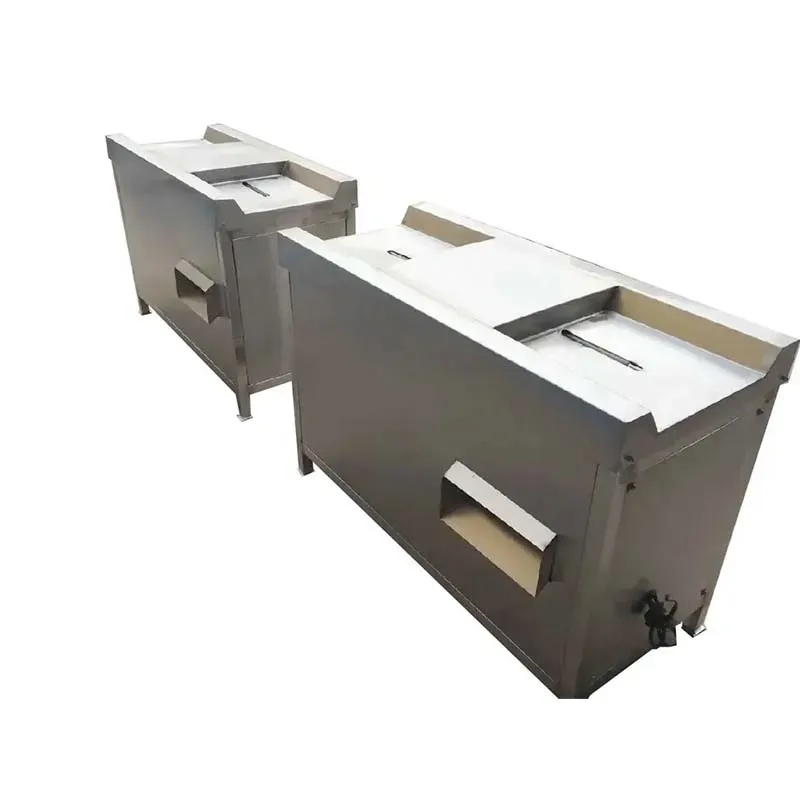straightening and cutting wire machine
Dec . 19, 2024 00:04 Back to list
straightening and cutting wire machine
Straightening and Cutting Wire Machine Optimizing Wire Processing Efficiency
In the realm of manufacturing, the need for precision and efficiency cannot be overstated. One of the crucial processes that ensure high-quality output in industries such as construction, automotive, and manufacturing is wire processing. This is where the straightening and cutting wire machine comes into play. This advanced machinery serves to enhance the quality and efficiency of wire production, making it an essential tool in various industrial applications.
The straightening and cutting wire machine is specifically designed to take coiled wire and transform it into straightened, cut-to-length pieces. This process is crucial because, in its raw coiled form, the wire can exhibit imperfections, bends, and twists that make it unsuitable for further processing or application. The machine effectively eliminates these issues, ensuring that the wire produced meets the rigorous standards required for successful integration into a wide range of products.
How the Machine Works
The straightening and cutting process typically involves several key components, including a wire feeding mechanism, straightening rollers, and a cutting unit. The wire is fed into the machine and passes through a series of straightening rollers that apply pressure to remove any bends or curves. This part of the process is critical as it enables the wire to achieve a high degree of straightness, which is vital for any subsequent processing, such as welding, fastening, or assembly.
Once the wire is adequately straightened, it moves to the cutting unit. The cutting mechanism can be programmed to produce wire segments of varying lengths, tailored to the specific requirements of the end product. This flexibility allows manufacturers to optimize their production lines and reduce waste, as they can specify the exact lengths needed for their applications.
Advantages of Using Straightening and Cutting Wire Machines
straightening and cutting wire machine

1. Increased Efficiency Automating the straightening and cutting process significantly reduces the time required to prepare wire for production. By minimizing manual handling and streamlining operations, companies can increase output and meet deadlines more effectively.
2. Improved Precision With advanced technology, modern straightening and cutting machines ensure a level of precision that manual methods struggle to achieve. This results in fewer defects and a higher-quality final product, which is crucial in industries where standards are particularly high.
3. Cost-Effectiveness While the initial investment in a straightening and cutting machine may seem substantial, the long-term savings can be significant. Reduced labor costs, less material waste, and increased throughput all contribute to a lower cost per unit of output.
4. Versatility These machines can handle a variety of wire types and sizes, making them adaptable for different projects. With adjustable settings and custom programming, manufacturers can easily switch between different product specifications without needing extensive downtime.
5. Enhanced Safety Automating the wire straightening and cutting process reduces the risk of workplace injuries associated with manual handling. The use of machinery minimizes human interaction with sharp and heavy materials, creating a safer work environment.
Conclusion
In summary, straightening and cutting wire machines represent a significant advancement in wire processing technology. By providing efficiency, precision, and cost-effectiveness, these machines play a vital role in meeting the demands of modern manufacturing. As industries continue to evolve, the reliance on such technology is expected to grow, driving innovation and enhancing productivity on the production floor. Embracing these machines can lead to superior quality products and a competitive edge in the marketplace.
-
Automatic Feeding Line System-Pan Feeder Nipple Drinker|Anping County Yize Metal Products Co., Ltd.
NewsJul.29,2025
-
Hot Sale 24 & 18 Door Rabbit Cages - Premium Breeding Solutions
NewsJul.25,2025
-
Automatic Feeding Line System Pan Feeder Nipple Drinker - Anping County Yize Metal Products Co., Ltd.
NewsJul.21,2025
-
Automatic Feeding Line System Pan Feeder Nipple Drinker - Anping County Yize Metal Products Co., Ltd.
NewsJul.21,2025
-
Automatic Feeding Line System - Anping Yize | Precision & Nipple
NewsJul.21,2025
-
Automatic Feeding Line System - Anping Yize | Precision & Nipple
NewsJul.21,2025






